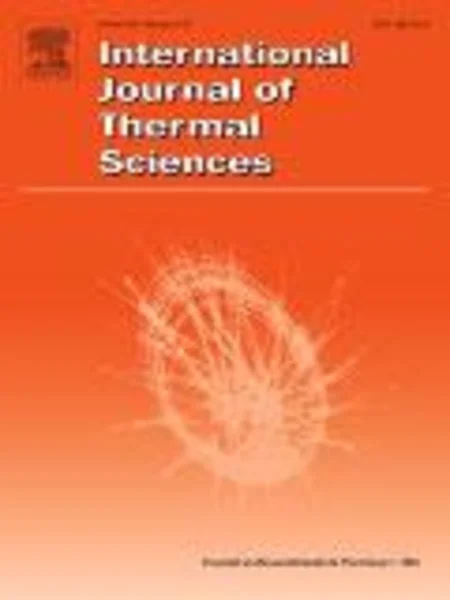-
multi-objective optimization design of the heating/cooling channels of the steam-heating rapid thermal response mold using particle swarm optimization
جزئیات بیشتر مقاله- تاریخ ارائه: 1390/01/01
- تاریخ انتشار در تی پی بین: 1390/01/01
- تعداد بازدید: 670
- تعداد پرسش و پاسخ ها: 0
- شماره تماس دبیرخانه رویداد: -
the layout of the heating/cooling channels is of great significance for rapid heat cycle molding (rhcm) mold with steam heating and coolant cooling because it not only affects heating/cooling efficiency, temperature uniformity of mold cavity surface, but also has a great influence on mold strength. thermal, structural and fatigue analysis based on finite element method (fem) is performed to investigate the effect of the heating/cooling channels layout on thermal response, structural strength and fatigue life of the rhcm mold. in order to obtain a reasonable layout of heating/cooling channels, this study focuses on the development of an effective methodology for the layout optimization of the heating/cooling channels by integrating response surface methodology (rsm) and multi-objective particle swarm optimization (mopso) algorithm. three design variables describing the layout and scale of the heating channels are selected to do the design of box-behnken experiment with three factors and three levels. thermal/structural analysis is carried out using ansys to obtain the corresponding values of three objective variables, including required heating time, maximum cavity surface temperature difference and maximum von-mises stress due to thermal expansion, which are used to describe heating efficiency, temperature uniformity and mold strength, respectively, for different sets of design variables. rsm is utilized to analyze the effect of the design parameters and further construct mathematical models to quantitatively describe the relationship between design variables and objective variables via regression analysis. analysis of variance (anova) demonstrates that the developed quadratic models are highly effective and significant. confirmation experiment is also conducted to verify the effectiveness and accuracy of the developed quadratic polynomial models. based on these mathematical models, a mopso algorithm is then introduced to optimize the design variables by comprehensively considering thermal efficiency, temperature uniformity and structural strength of the rhcm mold. the optimum results show that thermal efficiency and temperature uniformity of the rhcm mold can be greatly improved with the optimum design variables for the layout of the heating/cooling channels. the following verification experiment demonstrates the validity of the optimum results.
حوزه های تحت پوشش رویداد
مقالات جدیدترین رویدادها
-
استفاده از تحلیل اهمیت-عملکرد در ارائه الگوی مدیریت خلاقیت سازمانی و ارائه راهکار جهت بهبود
-
بررسی تاثیر ارزش وجوه نقد مازاد بر ساختار سرمایه شرکت های پذیرفته شده در بورس اوراق بهادار تهران
-
بررسی تأثیر سطح افشای ریسک بر قرارداد بدهی شرکت های پذیرفته شده در بورس اوراق بهادار تهران
-
بررسی تأثیر رتبه بندی اعتباری مبتنی بر مدل امتیاز بازار نوظهور بر نقد شوندگی سهام با تأکید بر خصوصی سازی شرکت ها
-
تأثیر آمیخته بازاریابی پوشاک ایرانی بر تصویر ذهنی مشتری پوشاک ایرانی (هاکوپیان)
-
شناسایی و اولویت بندی عوامل مؤثر بر چابکی سازمان با استفاده از تکنیک سلسله مراتبی فازی (موردمطالعه: شرکت ماموت)
-
نقش معماری منازل مسکونی در تربیت فرزندان
-
بررسی تجربی رفتار برشگیرهای به شکل ناودانی نبشی و برشگیر t شکل
-
بررسی ظرفیت باربری نوک شمع در خاک های لایه ای
-
adsorption of 2- methyl-n-(2´-aminoethyl)-3-hydroxyl-4-pyridinone onto functionalized single-walled carbon nanotube: a dft study
مقالات جدیدترین ژورنال ها
-
مدیریت و بررسی افسردگی دانش آموزان دختر مقطع متوسطه دوم در دروان کرونا در شهرستان دزفول
-
مدیریت و بررسی خرد سیاسی در اندیشه ی فردوسی در ادب ایران
-
واکاوی و مدیریت توصیفی قلمدان(جاکلیدی)ضریح در موزه آستان قدس رضوی
-
بررسی تاثیر خلاقیت، دانش و انگیزه کارکنان بر پیشنهادات نوآورانه کارکنان ( مورد مطالعه: هتل های 3 و 4 ستاره استان کرمان)
-
بررسی تاثیر کیفیت سیستم های اطلاعاتی بر تصمیم گیری موفق در شرکتهای تولیدی استان اصفهان (مورد مطالعه: مدیران شرکتهای تولیدی استان اصفهان)
-
درآمدی بر اهمیت فرآورده ها و مشتقات محصولی میوه انار برای مدیریت مسائل انسانی
-
مطالعه تأثیر عدم تقارن اطلاعاتی بر رابطه بین همزمانی قیمت و نقدشوندگی سهام
-
تضمین های حقوق شهروندی متهمان جرایم تروریستی در مرحله تحقیقات؛ مطالعه تطبیقی در حقوق ایران، انگلستان و مصر
-
مقایسه نیروی ترک خوردگی در تیرهای مقاوم سازی شده با hpfrcc نسبت به تیر نمونه مرجع
-
تحلیل و بررسی توسعه فناوری و اهداف اقتصادی دولت اسلامی




سوال خود را در مورد این مقاله مطرح نمایید :